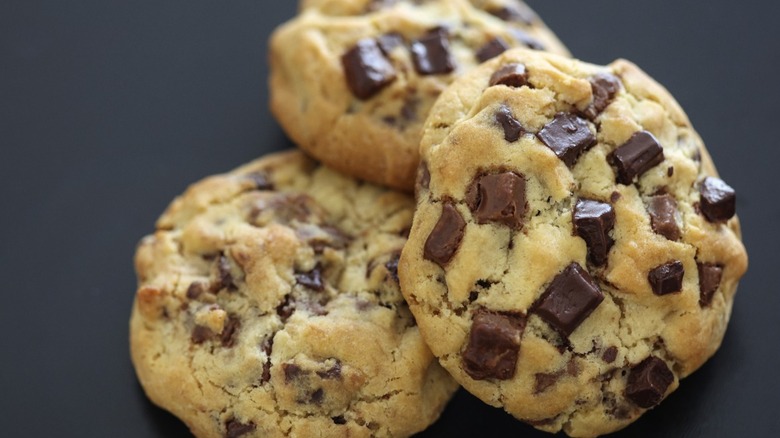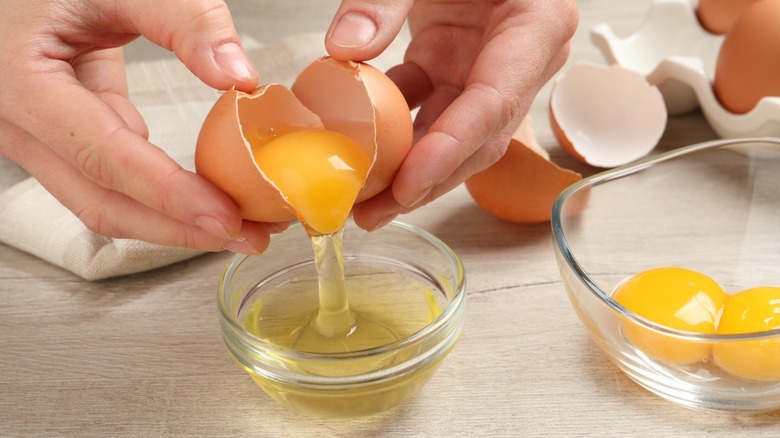Alton Brown's Secret For Even Chewier Chocolate Chip Cookies
There are thousands, if not hundreds of thousands, if not literally millions of chocolate chip cookie recipes out there. The variations are endless, ranging from thin and crispy, soft and gooey, or even cake-like, with some recipes combining all of these textures together. We all have our go-to cookie recipe. But while the majority of chocolate chip cookie recipes share similar core ingredients like flour, butter, sugar, vanilla extract, and chocolate chips, it's the cooking technique used for certain ingredients and the ratio of each ingredient that truly sets each recipe apart.
Developing a good chocolate chip cookie recipe is a calculated science and if there's one person who knows a thing or two about food science, it's Alton Brown. If you prefer a chewy chocolate chip cookie, Alton Brown's recipe delivers all the cookie hacks for some serious chewiness. According to Alton Brown's recipe for his Chewy Chocolate Chip Cookie, the formulation was inspired by a chocolate chip cookie recipe we've all probably baked ourselves: the recipe from the back of a Nestle Tollhouse morsel bag. To achieve that extra chewy texture, Brown swaps all-purpose flour for bread flour, removes the egg white and replaces it with milk, and reduces the granulated sugar while increasing light brown sugar. Now how on Earth did Brown arrive at these unique ingredient swaps?
Unconventional swaps and why they work
Bread flour, as it's name states, is usually used for bread-making or recipes that call for yeast (such as pizza dough or cinnamon rolls) because it's milled to have a higher percentage of protein. This higher protein content leads to more gluten development and more gluten development means chewiness. In baking, developing gluten is sometimes avoided because it can make baked goods tough. However, when Alton Brown makes an unconventional swap like this in a cookie recipe, we trust the process. Since bread flour enhances chewiness, Brown eliminates an egg white and replaces it with milk since egg whites can dry out baked goods if there's not enough moisture present. Which is also why Brown adds in moisture with whole milk.
As for the sugar, the Nestle Tollhouse recipe includes ¾ cup of both granulated and light brown sugar. Granulated sugar, aside from adding sweetness to any cookie, helps create a crispy exterior. On the other hand, brown sugar adds both caramel-like sweetness and moisture, which contributes to a cookie with a soft, gooey texture. Since Brown was after chewiness, he reduced the granulated sugar by ½ cup and increased the light brown sugar by ¼ cup.
It's worth noting another minor change made by Brown: the difference between chocolate chips and morsels. Regardless, don't forget to add the chocolate to your chocolate chip cookie. The final result? A chocolate chip cookie so thick and chewy that it redefines what it means to "sink your teeth in."

